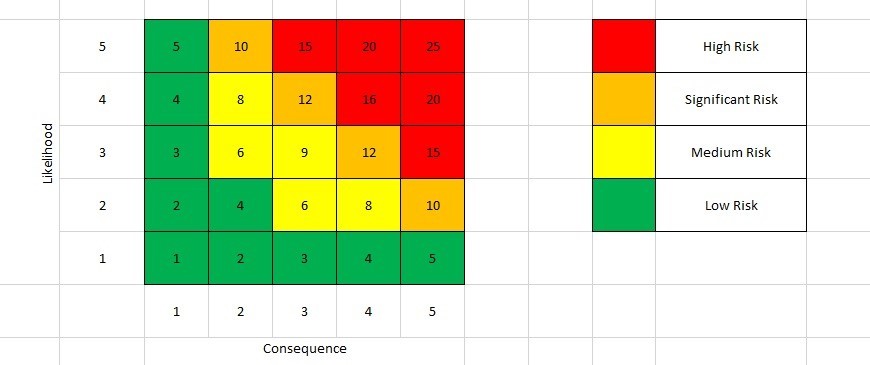“We don’t have a risk assessment for this PPE” is something I am told frequently when discussing risk assessment and PPE related subjects with our international BitePRO® Bite Resistant Clothing clients and customers.
The fact of the matter however is that a risk assessment must be carried out on a piece of PPE to determine that it is indeed the most suitable for the risk faced.
But sometimes I am even told “we do not have a risk assessment for our staff in this role”. Now, this is a little bit more ‘severe’ in my eyes. Why? Well, if a risk has been identified within that occupation, then a risk assessment must be carried out… this is what the law says.
Now when you consider that we are in communication with - attend meeting with - or already supply NHS Trusts, Mental Health Care Facilities, High Secure Correctional Facilities, Care Homes and many Special Educational Needs Schools, you can begin to imagine why I become a little perplexed when being told that ‘there is no risk assessment’ for these professionals to refer to, who, as part of their daily duties may well be subjected to a very particular risk daily: The risk of being bitten by a patient, pupil or service user.
Please allow me to make it really clear here:
- Health and Safety Executive Guidance on; Personal Protective Equipment at Work Regulations 1992
- Clothing – Para 10 – ‘where any uniform or clothing protects against a specific risk to health and safety, (for example high visibility clothing worn by the emergency services), it will be subject to the regulations.’
- Risk of physical violence – Para 13 – ‘The regulations apply to the provision of PPE (such as helmets or body armour) where staff are at risk from physical violence.’
- Para 31 – ‘PPE should only be used where it provides additional protection from residual risk. It must be identified as required as part of a risk assessment. There may be certain jobs and workplaces that would require everyone to use a specific type of PPE’
It is rather shocking or the very least surprising to see that so many organisations are not conducting risk assessments when placing their staff in environments where the risks of bite injuries is ‘considerable’ or ‘reasonable’.
Is it absolutely appropriate that PPE is supplied for those facing such residual risks, where de-escalation may have failed, where avoidance is not appropriate or where all other control measures that have been put in place (i.e. eliminated, substituted, engineered out or administrated for). However, we must understand that a residual risk will remain. It is about having the appropriate and suitable level of PPE:

Suitability of PPE
- Para 40 – ‘Regulation 4(3)(a)–(e) lists factors which determine whether PPE is suitable. When selecting PPE you should consider and take account of the following factors:
- (a) the job itself and the risks for which protection is needed.’
- Para. 52 – ‘The purpose of the assessment required under regulation 6 is to ensure that the employer, who has to provide PPE, chooses PPE which is correct for the particular risks involved and for the circumstances of its use.’
What Is About European Rules & Regulations
As far as our European counterpart are concerned, the requirement to wear suitable PPE within all EU member states is the same in context to our obligation here in the UK.
The European Framework Directive on Safety and Health at Work (Directive 89/391 EEC) is a real landmark in advancing safety and health at work.
This directive guarantees minimum safety and health requirements throughout Europe whilst permitting Member States to maintain or establish more strict methods. This directive had significant legal consequences because of the inadequate national legislation in some countries.
In 2004, the European Commission also issued a announcement in reference to the practical implementation of the directives, in particular in terms of the necessity for appropriate PPE, along with the legal necessity for organisations to conduct risk assessments.
Within Europe, there is no escaping the legal duty of care that we have towards our employees. We have to provide appropriate levels of protection.
Member states of the EU will take this legislative act and develop their very own laws around it, but they will have to accomplish these goals. They will also therefore have a legal basis to prosecute, within that country for any breaches in that duty of care.
IF the risk of being bitten by another individual has been identified and is deemed 'realistic' or 'reasonable', then bite resistant clothing is most certain worth considering and worth looking into.
Please contact us,
Stay Safe
Robert Kaiser, CEO



